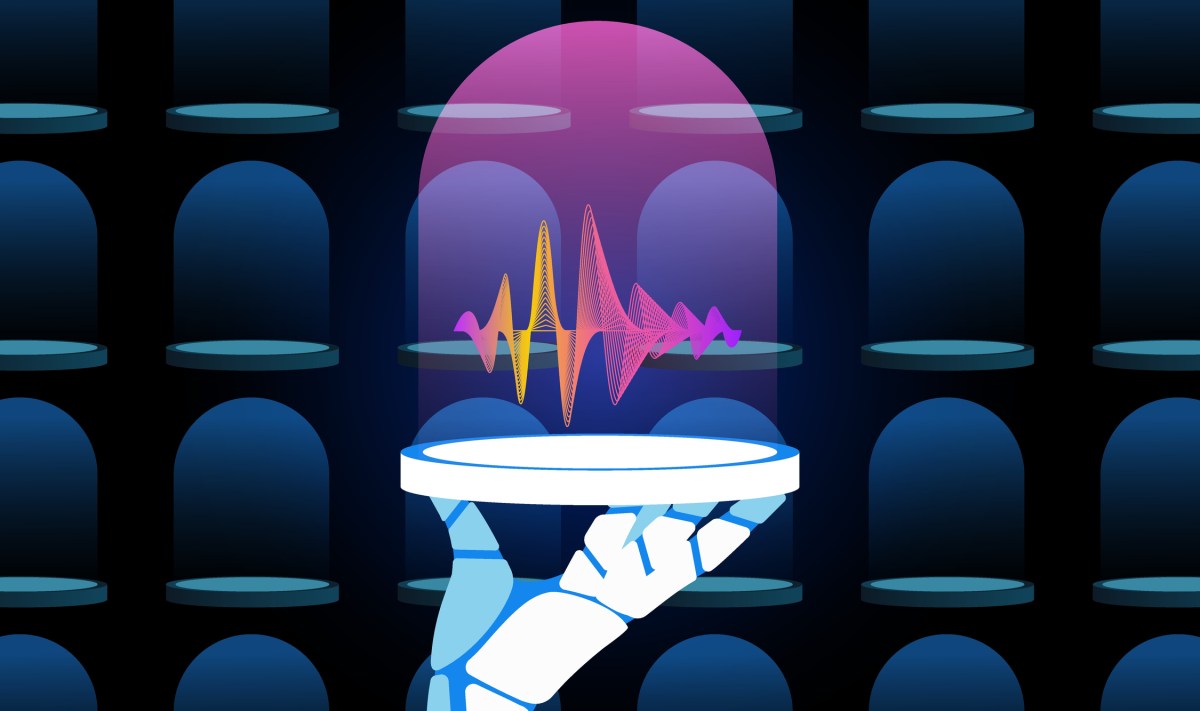ChatGPT's Voice: OpenAI Unveils Smarter, More Conversational AI Assistant
Technology
2025-03-25 01:10:22Content

OpenAI Elevates Conversational AI with Enhanced Voice Mode for ChatGPT Plus Users
In a significant leap forward for interactive AI technology, OpenAI has unveiled an improved version of its Advanced Voice Mode, exclusively available to paid ChatGPT subscribers. This latest update promises a more natural and fluid conversational experience that feels remarkably human-like.
The new voice interface is designed to be more personable and responsive, addressing one of the previous version's key limitations: over-interruption. Users can now enjoy smoother, more intuitive interactions that more closely mimic real-world conversations. The advanced algorithm allows for more nuanced communication, with the AI demonstrating improved listening skills and more contextually appropriate responses.
ChatGPT Plus subscribers will appreciate the more refined conversational dynamics, where the AI demonstrates greater sensitivity to conversational flow and user intent. By reducing unnecessary interruptions, OpenAI has created a more engaging and comfortable dialogue experience that feels more like chatting with an intelligent companion than interacting with a machine.
This update underscores OpenAI's commitment to making AI interactions increasingly natural, seamless, and user-friendly.
ChatGPT's Revolutionary Voice Mode: A Leap Forward in Conversational AI Interaction
In the rapidly evolving landscape of artificial intelligence, OpenAI continues to push the boundaries of human-machine communication, introducing groundbreaking innovations that promise to transform how we interact with digital assistants. The latest advancement in conversational technology represents a significant milestone in creating more natural, intuitive, and responsive AI interactions.Transforming Digital Conversations: The Future of AI Communication Unfolds
The Evolution of Conversational Intelligence
OpenAI's latest breakthrough in Advanced Voice Mode represents a quantum leap in artificial intelligence communication. Traditional voice assistants have long struggled with the nuanced art of conversation, often feeling mechanical and rigid. This new iteration breaks through those limitations, introducing a more sophisticated approach to digital dialogue that mimics human interaction with unprecedented precision. The development team has meticulously engineered an AI system that understands conversational dynamics at a deeper level. By implementing advanced natural language processing algorithms, the voice mode can now detect subtle conversational cues, emotional undertones, and contextual nuances that previously eluded digital assistants. This represents more than just a technological upgrade; it's a fundamental reimagining of how artificial intelligence can engage in meaningful dialogue.Personalization and Contextual Understanding
What sets this new voice mode apart is its remarkable ability to adapt and personalize interactions. Unlike previous iterations that followed rigid communication protocols, this advanced system learns and adjusts in real-time. It can recognize individual user communication styles, preferences, and even emotional states, creating a more tailored and responsive interaction. The AI's improved interrupt management is particularly noteworthy. Previous voice assistants often disrupted conversations abruptly or failed to understand conversational flow. This new version demonstrates a more refined approach, knowing precisely when to interject and when to listen. It's akin to having a conversation with an exceptionally perceptive and intelligent companion who understands the delicate art of communication.Technical Innovations Behind the Breakthrough
Beneath the surface, complex machine learning models drive this revolutionary voice mode. OpenAI has leveraged cutting-edge neural network architectures that process linguistic and paralinguistic information simultaneously. These models analyze not just words, but tone, pace, emphasis, and contextual implications, creating a multi-dimensional understanding of communication. The technical team employed sophisticated training methodologies, exposing the AI to millions of conversational scenarios. This extensive training allows the system to develop an almost intuitive sense of human communication, breaking down traditional barriers between human and machine interaction. It's a testament to the incredible potential of artificial intelligence to understand and replicate complex human communication patterns.Implications for Future Human-AI Interaction
This advancement extends far beyond mere technological curiosity. It represents a profound shift in how we conceptualize artificial intelligence's role in our daily lives. As voice interfaces become increasingly integrated into personal and professional environments, the ability to communicate naturally becomes paramount. Potential applications span numerous domains, from customer service and healthcare to education and personal assistance. Imagine an AI that can provide emotional support, understand context, and communicate with genuine empathy. OpenAI's latest voice mode brings us significantly closer to that transformative vision, suggesting a future where technology feels less like a tool and more like an intelligent, responsive companion.Accessibility and User Experience
Currently available exclusively to paid ChatGPT users, this advanced voice mode represents a premium feature that showcases the platform's commitment to continuous innovation. By offering this cutting-edge technology to its most engaged users, OpenAI creates an ecosystem of technological exploration and feedback. The user experience is designed to be seamless and intuitive. Users can expect more natural conversations, reduced communication friction, and a sense of genuine interaction that transcends traditional digital assistant limitations. It's not just an upgrade; it's a reimagining of human-AI communication.RELATED NEWS
Technology

Comfort Meets Chaos: 10 Adorable Games That Will Shatter Your Expectations
2025-03-16 12:00:00
Technology

Breaking: OpenAI Unleashes GPT-4.5 — A Quantum Leap in AI Capabilities
2025-02-27 20:00:00
Technology

Breaking: Anthropic Unveils Groundbreaking AI That Thinks Like a Human Brain
2025-02-24 18:32:16





